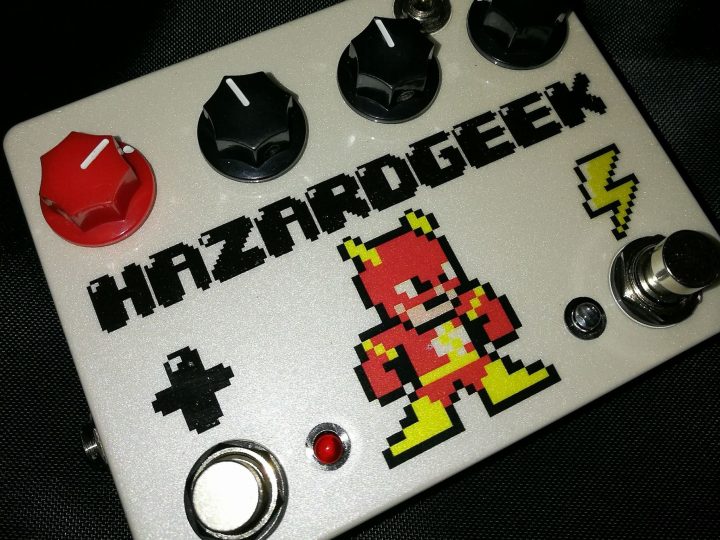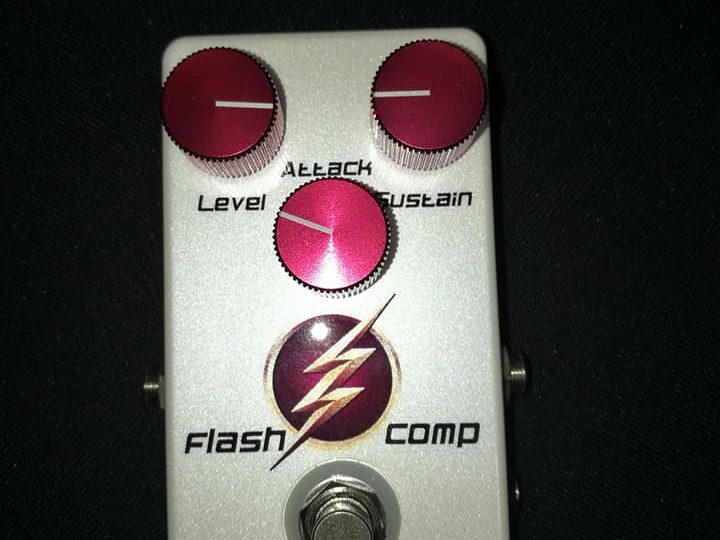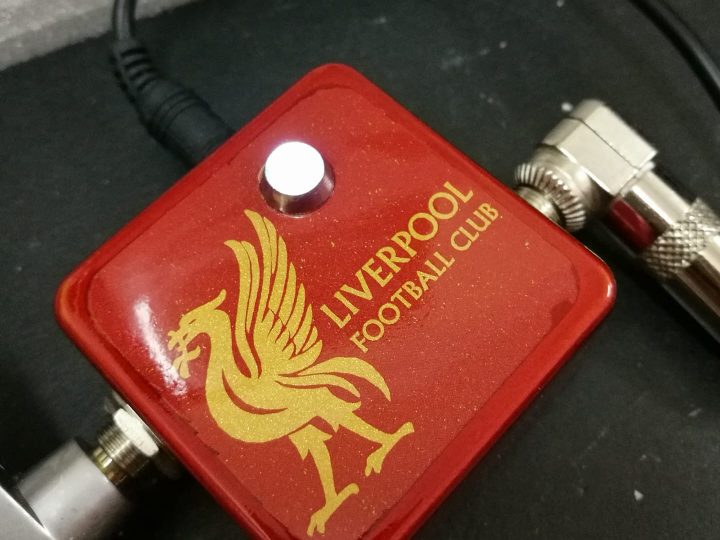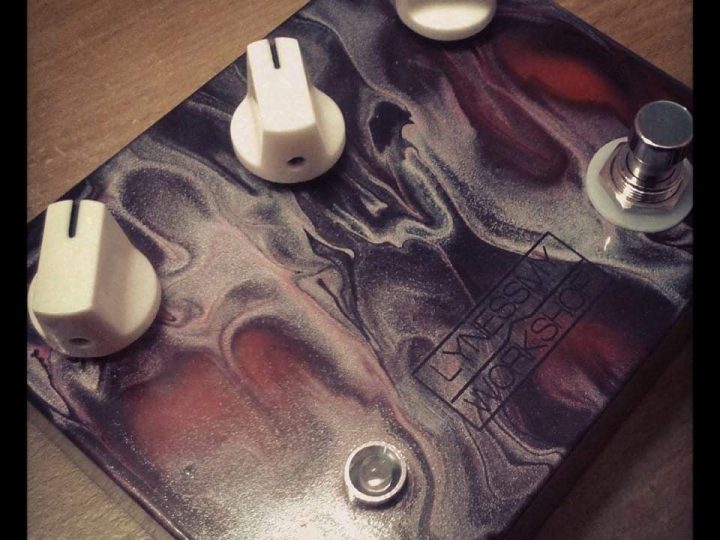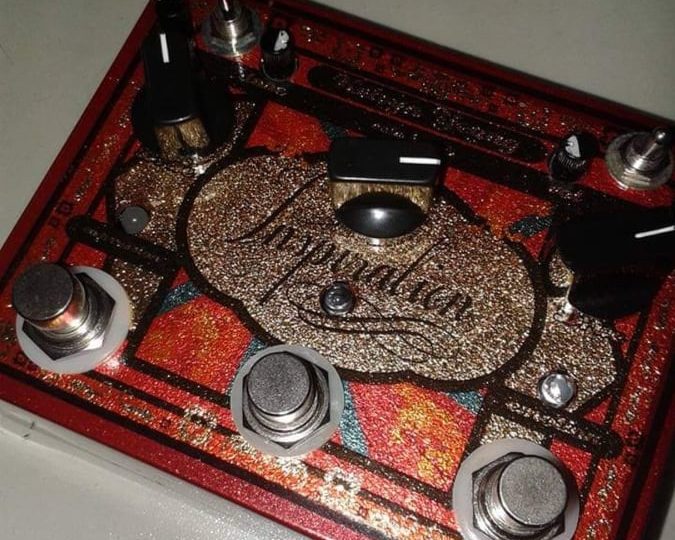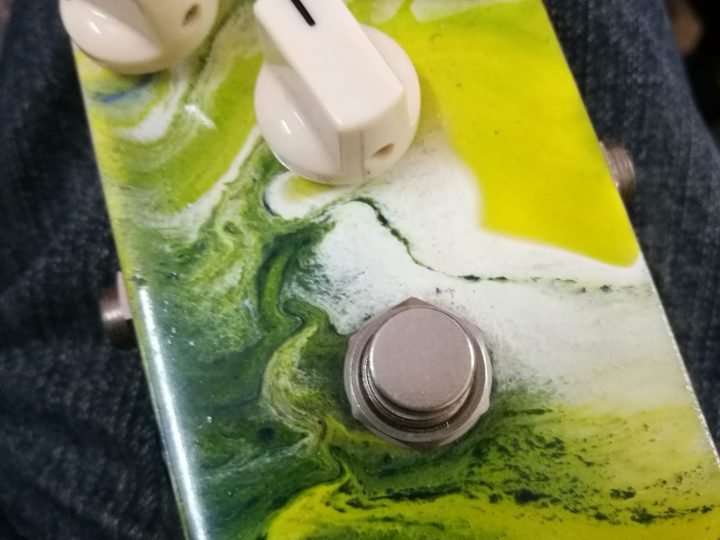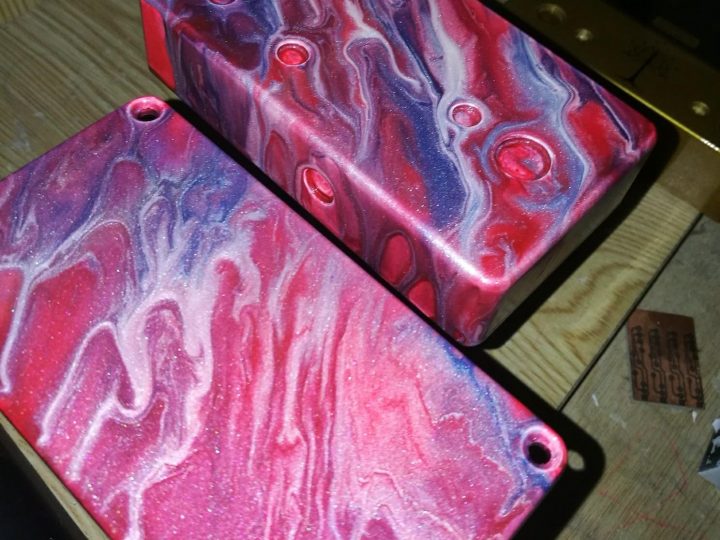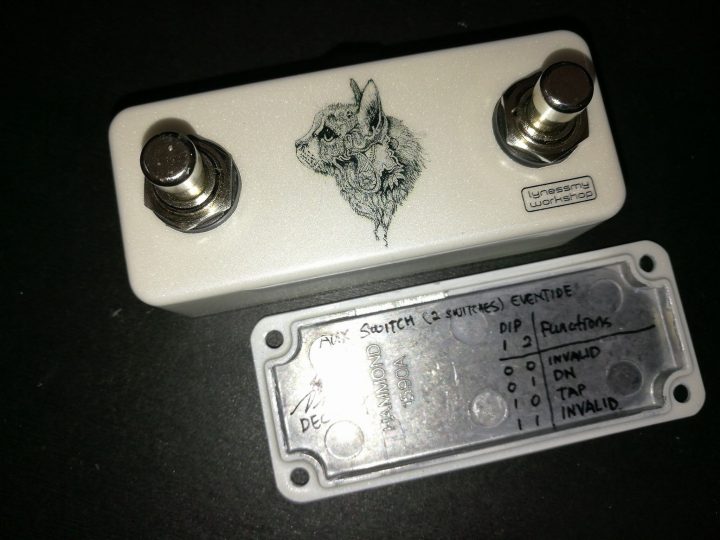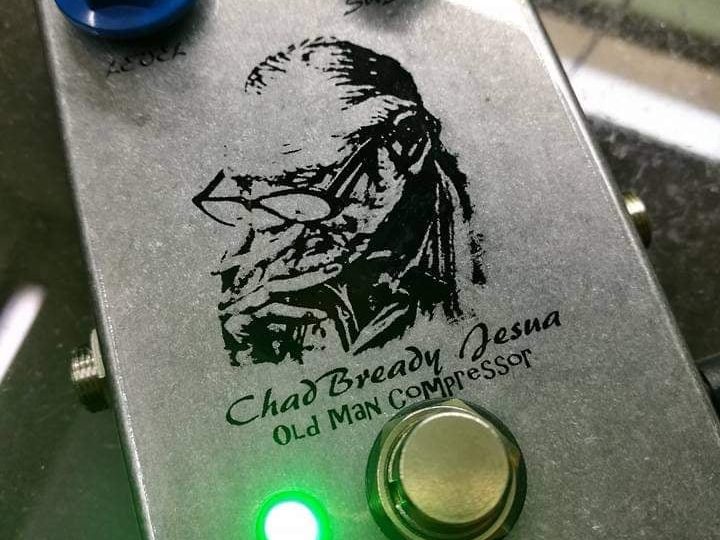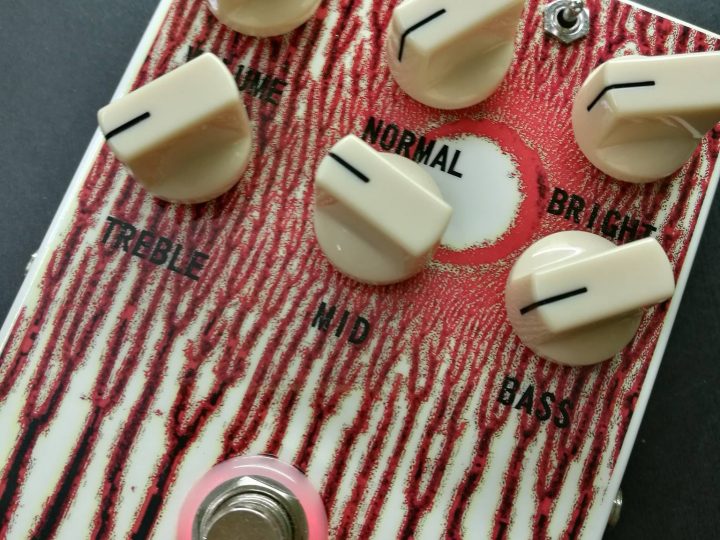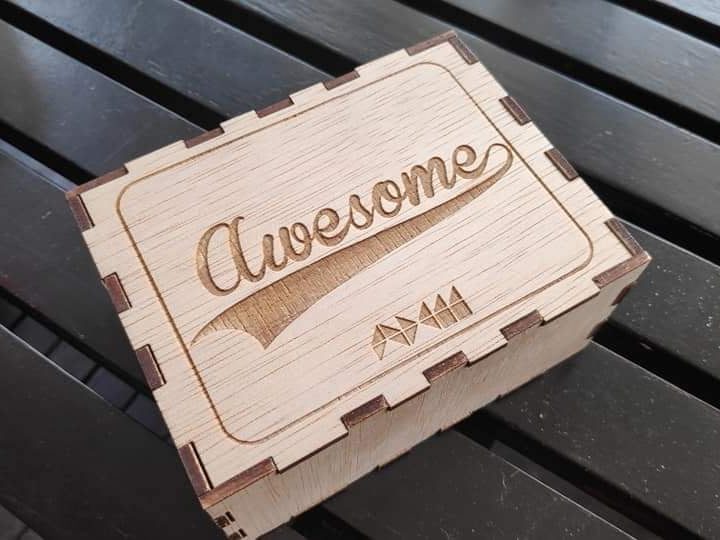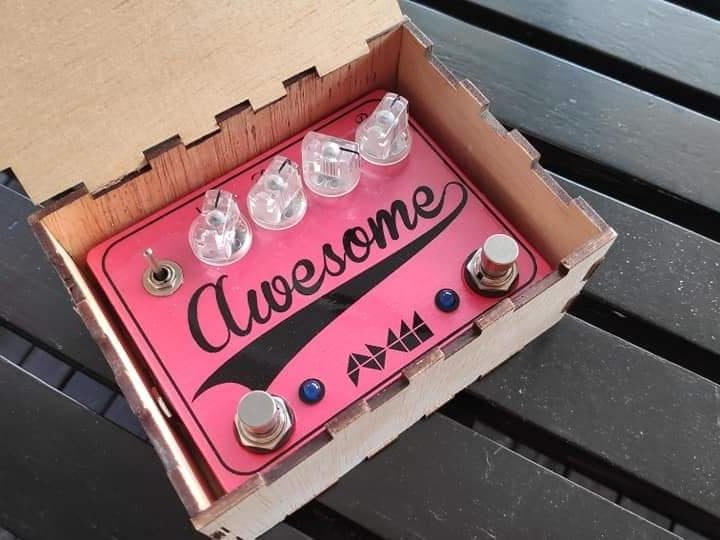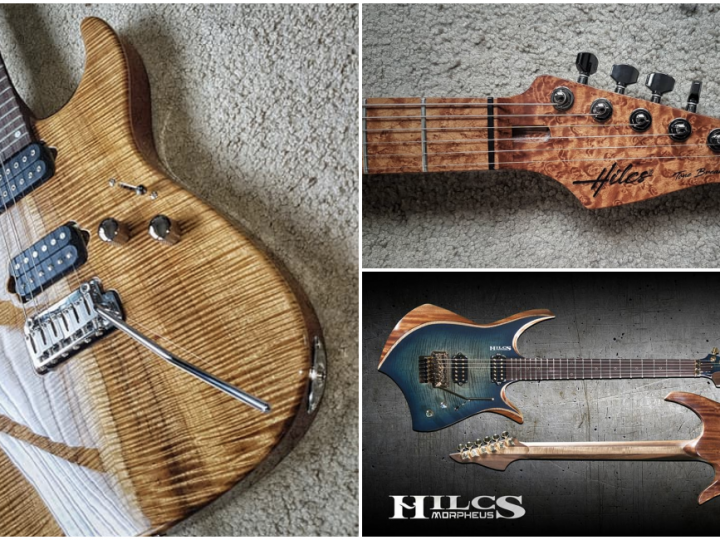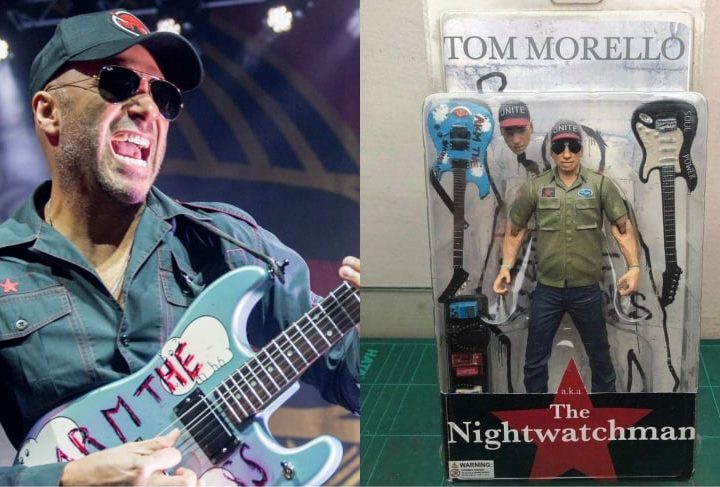We Spoke To 5 M’sian Guitar-Effects Pedal Builders on Starting a Biz & Building Their First Stompbox
 Thirsty for JUICE content? Quench your cravings on our Instagram, TikTok and WhatsApp
Thirsty for JUICE content? Quench your cravings on our Instagram, TikTok and WhatsApp

If a guitarist could be compared to a painter, then the guitar would be their brush, the amp would be their canvas, and the effects, no doubt, would be their colours.
Since the first portable guitar effect – the bulky Trem Trol 800 Tremolo – was introduced in 1948, effect pedals have been a staple feature at the feet of guitarists the world over. Everyone from Jimi Hendrix who popularised the Wah Wah and Fuzz Face, to Rage Against The Machine’s Tom Morello who infamously made his guitar sound like a turntable, to that noisy kid next door introducing you to sludge metal, has used them and today, pedals come in all shapes and sizes giving guitarists their signature sounds. The combinations are endless, and just like guitars, pedals can be modified.
Malaysia, having a small but highly-driven pool of music talent, in recent years has seen our own locals diving into the niche realm of music-related electronics. Sourcing their parts from all over the world, these builders – many of whom have no formal training – have soldered thousands of components together and housed them into hundreds of their own uniquely-designed steel casings to birth their own brands.
Seeing as how we have our own amp manufacturer – the well-respected Ceriatone, as well as our own promising guitar brand, it is only natural that made-in-Malaysia guitar-pedals would pop up to switch up the effects game.
JUICE had a chance to speak to the people behind four emerging pedal brands – Rare Efek, Rectifier Effects, XFX Boutique/Electronics, and Elektrik Head – and otai pedal builder Jimmy of the defunct Lynessmy to find out more about what goes into building these sonic-manipulating gadgets and the challenges of DIY electronics.
Rare Efek
Rare Efek was started by two friends, Redhuan Jamil and Heikal Abu Hassan, who are vintage pedal lovers. Due to “vintage” turning into a buzzword lately, vintage products were usually overpriced due to their scarcity.
View this post on Instagram
Before Rare Efek, the duo would modify friends’ and their own pedals to sound vintage and save on cash. During the pandemic, they took the opportunity to create their own version of a particular, expensive vintage pedal – based on a Tweed amp when tubes are hot. So they looked on the internet for parts, ordered, waited for the parts to arrive, got it, put it together and… it sucked.
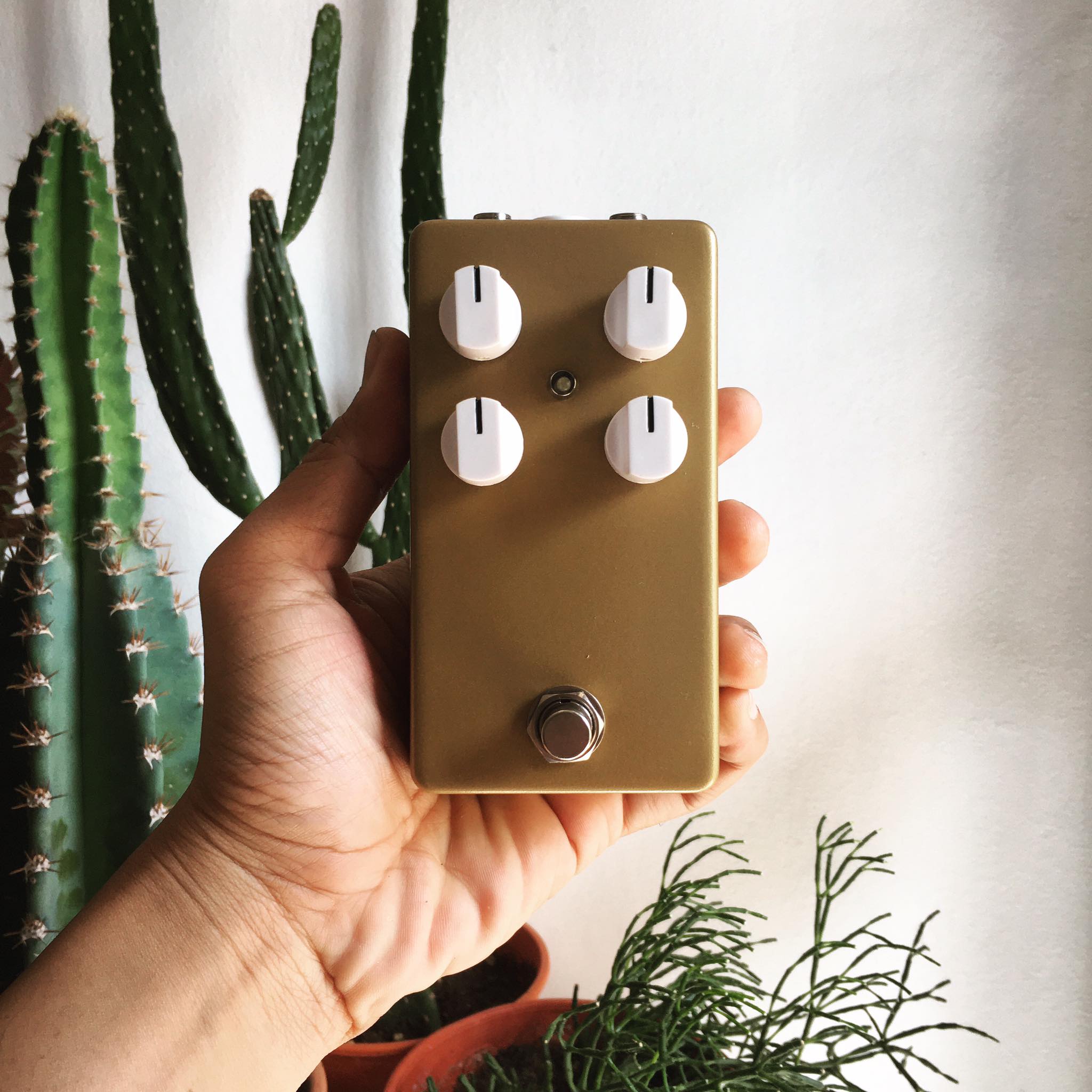
“What is this sound?” went the guys.
Obviously, their early failure did not deter them but it did teach them a valuable lesson – getting something correct on the first try was rare.
Needing more money on R&D, they sold off their gear so they could invest in their business. Not having a technical background, the guys studied the schematics off the internet and stuck to simple analog-based effects.
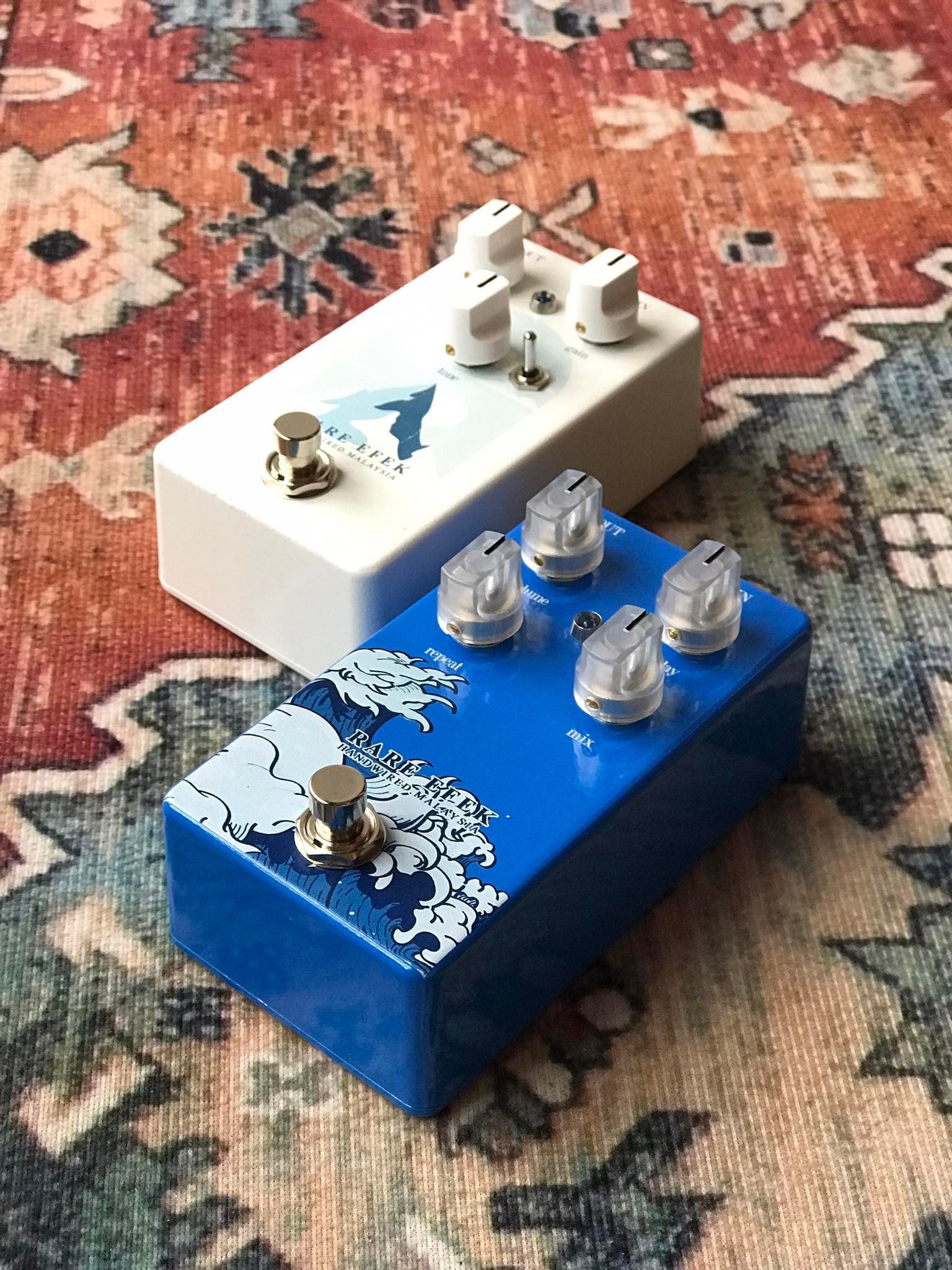
In the middle of 2020, the guys had time on their hands to focus on pedal building. MCO had forced Redhuan, who’s in F&B, and Heikal, a safety officer who plays in punk rock band Half-Asleep, to leave their day jobs behind temporarily.
By the end of that year, they debuted 4 effect pedals at a GLBM (Group Lelong Barang Muzik Malaysia) event at Bangi. Although they only had 2 effects ready (Gunung fuzz & Ombak delay), they decided to rush the R&D to release another 2 more in time for the event. As a result, one pedal blew during the show (what’s that lesson again?). Still, the pedals made waves and soon, the pressure that the guys put on themselves paid off.
View this post on Instagram
With striking designs printed on the enclosures, Rare Efek pedals have a premium look. A former graphic designer, Redhuan created the pedals by using water transfer decal at first but switched to printing with a factory later due to the quality.
The 4 pedals offered by Rare Efek at the moment are Ombak (tape-based delay), Kaktus (overdrive), Flora (distortion) and Astronot (boost). They offer knobs and LED-customisation for all 4 pedals and take anywhere from 2 weeks to 2 months to complete a pedal.

At the moment, Rare Efek has built and sold up to 50 pedals. The Ombak is currently undergoing R&D for its third version which will included Tap Tempo (this Writer got a sneak peek of it – and it looks like it can give the EHX Memory Man Deluxe a run for its money). This essentially means Efek Rare are moving into integrating digital with analog effects. They also plan to create more ready-stock to cut down on the waiting time for customers.
Funny thing is, that first pedal they built that sucked, “doesn’t sound so bad anymore” when they heard it again the other day.
Keep up with Rare Efek on Facebook and Instagram.
Elektrik Head
The ’90s were a magical decade for rock music and for a young Lee Khian Nyam who rode the alternative wave with the hugely-underrated Spiral Kinetic Circus in the middle of the decade.
Although the band’s career was short-lived, music continued to be part of Khian Nyam’s life and he’s currently in a doom sludge band called Iron Moth.
The first pedal he cloned was for his bassist. It was a green EHX Russian Muff. The challenge was to fit the circuit board into the enclosure with audio jacks, knobs, foot switch and DC jack. It would at least have to look presentable apart from being functional.
View this post on Instagram
The placement of the graphic and hole for the foot-switch had to be accurate. But luckily, everything when well on his first attempt which Khian Nyam boils down to his “character of planning everything a few steps ahead”. Still, pedal building was more of a hobby for him at the time.
Before the pandemic, he approached a few pedal builders to make a specific pedal to his taste but they either couldn’t do it or did not get back to him. So he decided to do his own research, learning from YouTube and articles. Coming from an audio engineering background (a graduate from SAE), it was quite easy for Khian Nyam to grasp what was going on in the schematics of well-known pedals.

With that, he started building his first pedal during the pandemic, called Bingit and released it under his brand Elektrik Head. Combining the Proco Rat and Boss HM-2, Bingit is a monster of a pedal suited for the heaviest of players.
The Bingit Version 2, as evident from the demo video below by a customer, packs as much punch as its predecessor. It’s based on a modded HM-2 circuit.
Since the pedals that Khian Nyam wanted to use for Iron Moth were not available locally, he decided to focus Elektrik Head on that. As you can tell, majority of them are heavy-distortion based, down the lines of fringe metal genres like sludge, doom and stoner.
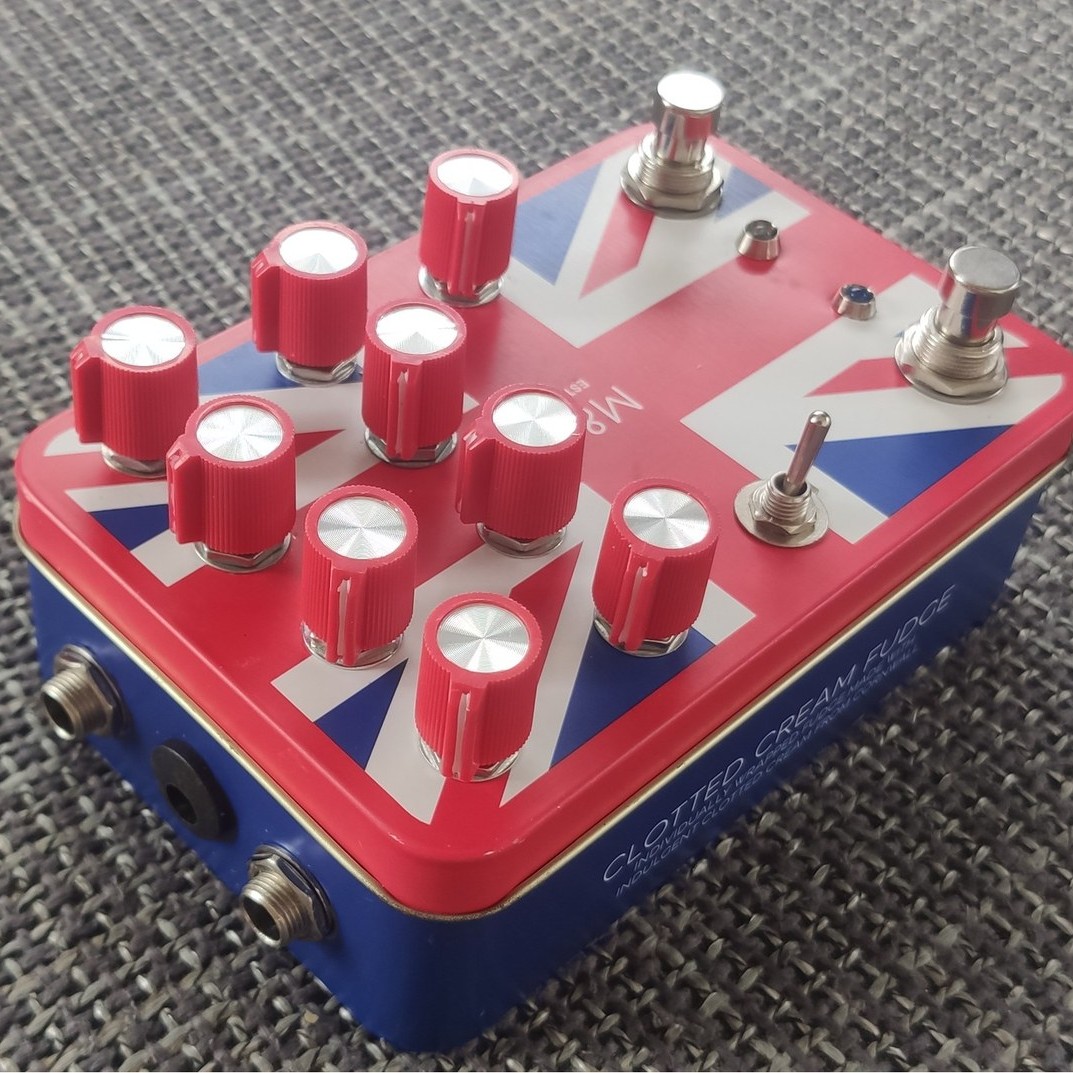
Khian Nyam has released four pedals – Bingit, Kerah, Pontianak and Bingit Version 2 – under Elektrik Head so far, and he does custom pedals for customers who want to clone their favourite pedals on a budget. At the moment, only the Bingit V2 is available as the rest have sold out. In the midst of replenishing his stock, Khian Nyam does custom orders in the meantime.
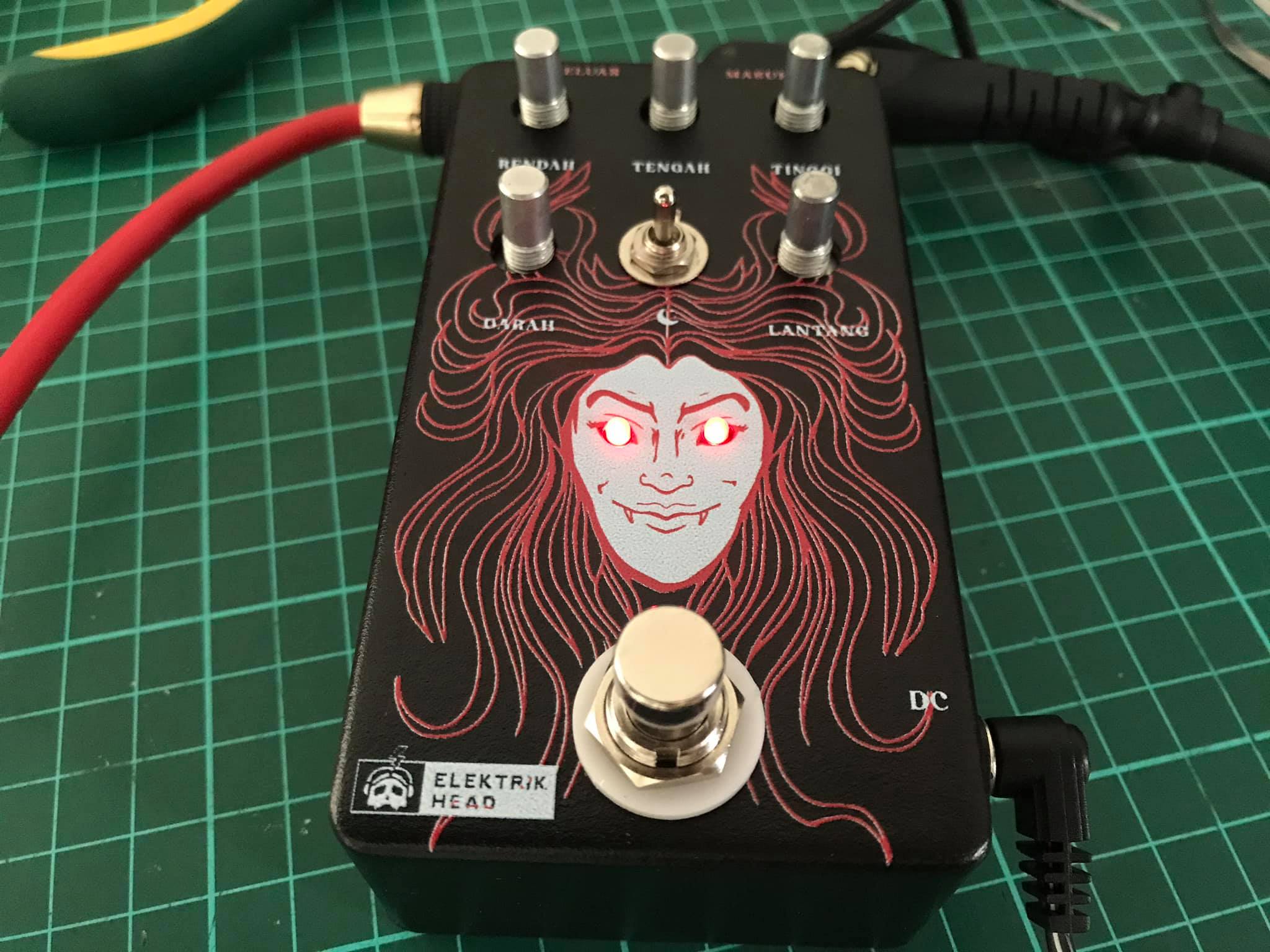
While Bingit and Kerah were designed by his bassist Azman Hashim, the Pontianak was done by Afiq of Oh Chentaku, Berdosa and Tarik Jeans.
The first pedal in the Hantu series, the Pontianak features red-LED lights placed at the eyes of the illustrated vampire, that lit up when the pedal is engaged. Khian Nyam is currently working on the second pedal in this series which will be called Toyol.
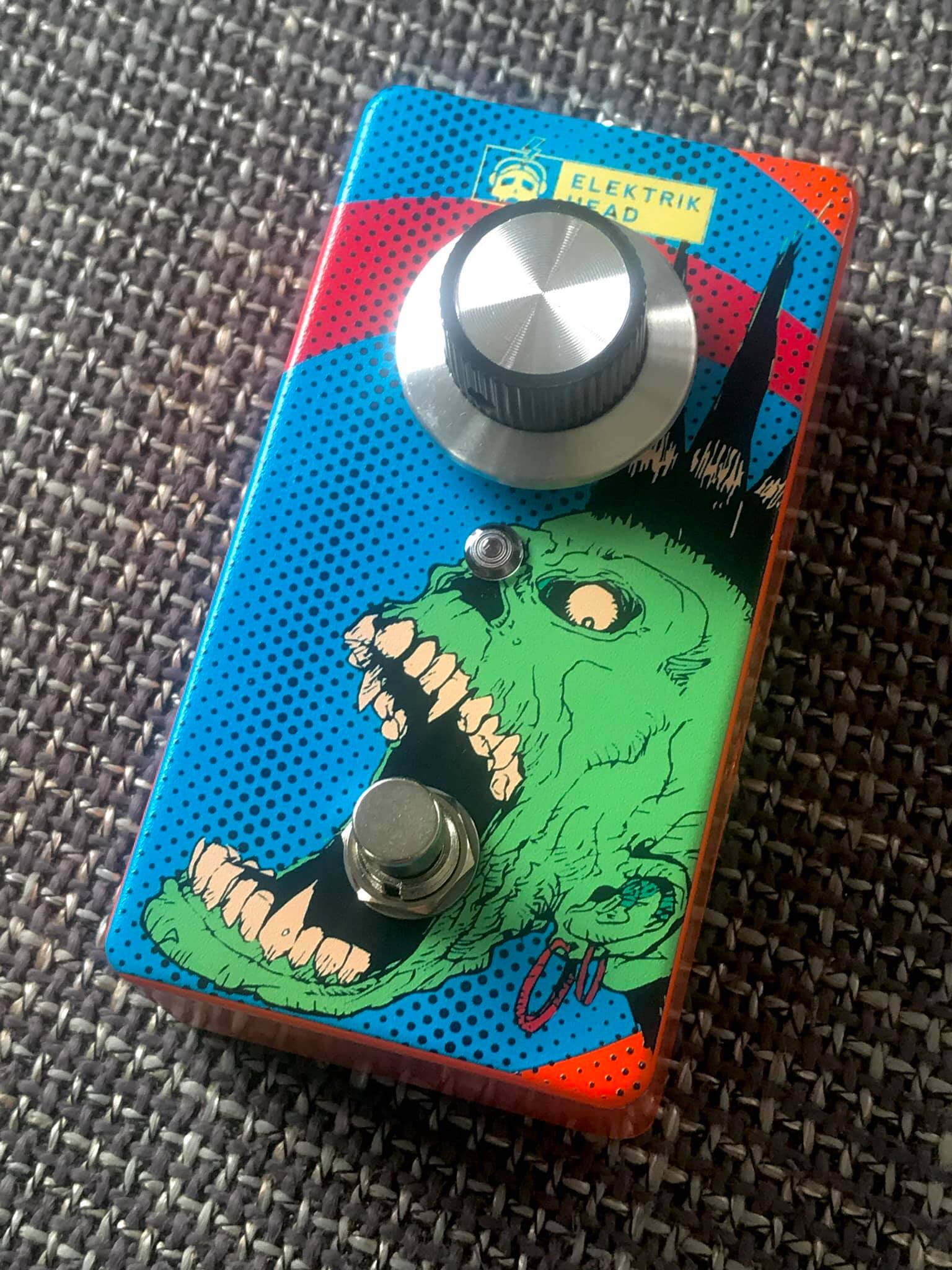
Definitely made collectible due to the designs, he uses premium components so that the sound of his pedals matches the look.
If you’re looking to take your distortion to the Gates of Hell and back without breaking your tone, you should definitely check out these pedals.
Follow Elektrik Head on Facebook and Instagram.
Rectifier Effects
Haniff’s first contact with pedal schematics was in 2010 when he was trying to fix a broken DS-1. Being a student, it wasn’t financially sustainable for him to build pedals at the time, so he stopped at the theory.
Then in 2014, Haniff got back into playing guitar and needed a distortion. He Googled for schematics and found a simple one. He based his first pedal on an Electra distortion with a simple high pass filter as a tone control. It sounded decent to his ears and did its job until he lost it during a move.
View this post on Instagram
Two years later, Haniff started to build pedals for other people (mostly musician friends and those within their circles). Originally handmade in Besut, Terengganu, Haniff moved to KL in 2017 where he continues to build an array of dirt pedals under the brand Rectifier Effects.
View this post on Instagram
Today, though most of his customers are from the Klang Valley with a smaller portion distributed throughout Malaysia, he gets occasional orders from Japan, Australia, Indonesia, Netherlands, Canada and a considerable amount from the US.
Currently doing a PHD in Engineering focusing on Hydropower, Haniff studied mostly mechanical design but he benefited from having one basic electronic class during his first year.

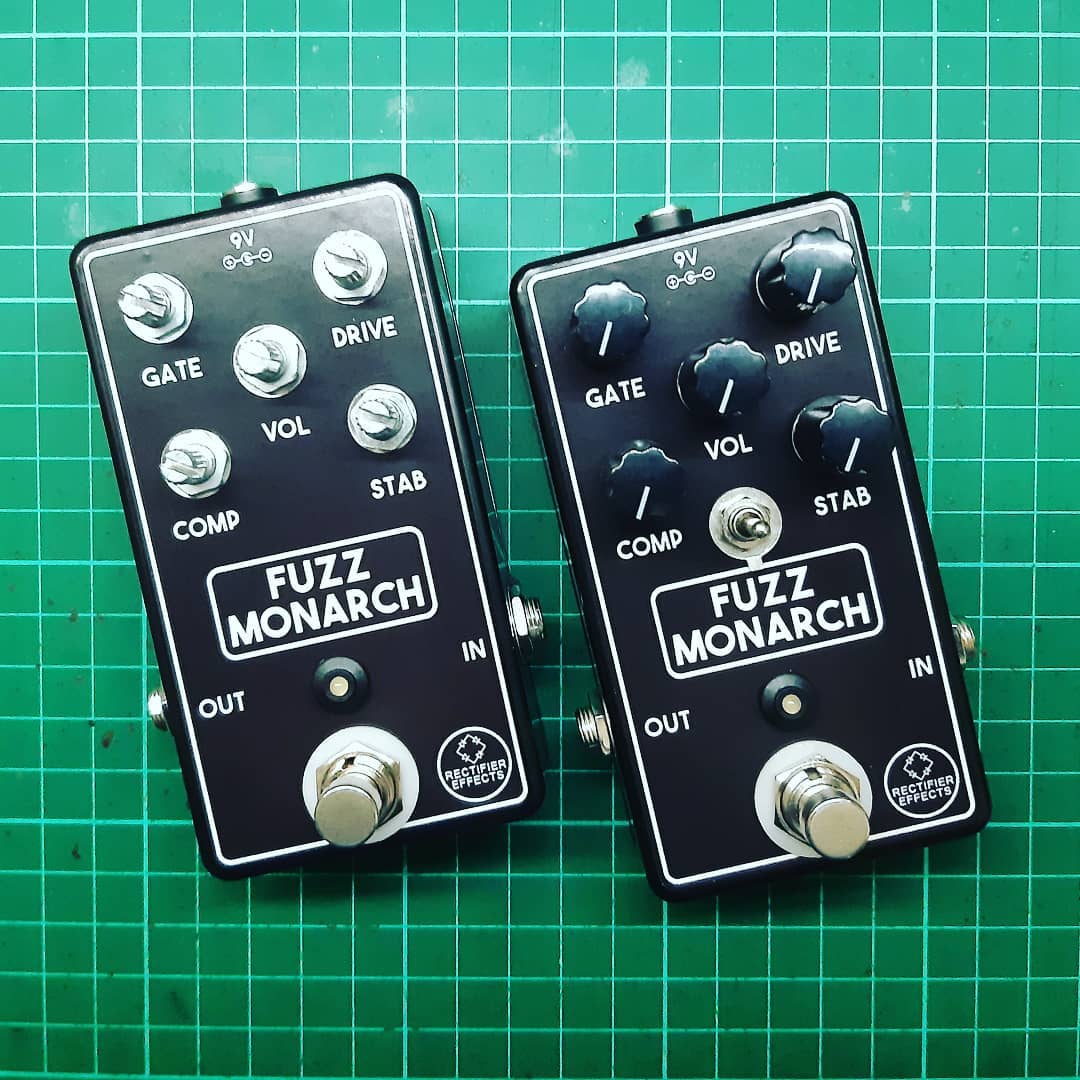
One standout pedal from Rectifier Effects, as tested by this Writer, is the Fuzz Monarch (pic above). Based on the Fuzz Factory by ZVEX, Rectifier’s Fuzz Monarch allows you to take control of all your freakish feedback options with Stab, Gate and Compressor knobs, and it comes at a fraction of the price of the Fuzz Factory.
View this post on Instagram
Sourcing for good components is key to creating a great-sounding pedal, and Haniff gets most of his stuff from Element14 or Tayda, which occasionally looking on lovemyswitches.com, Small Bear and Musikding. For pedals like the Fuzz Monarch, Haniff uses much sought-after NOS germanium transistors, which he gets exclusively from a private seller in Ukraine.
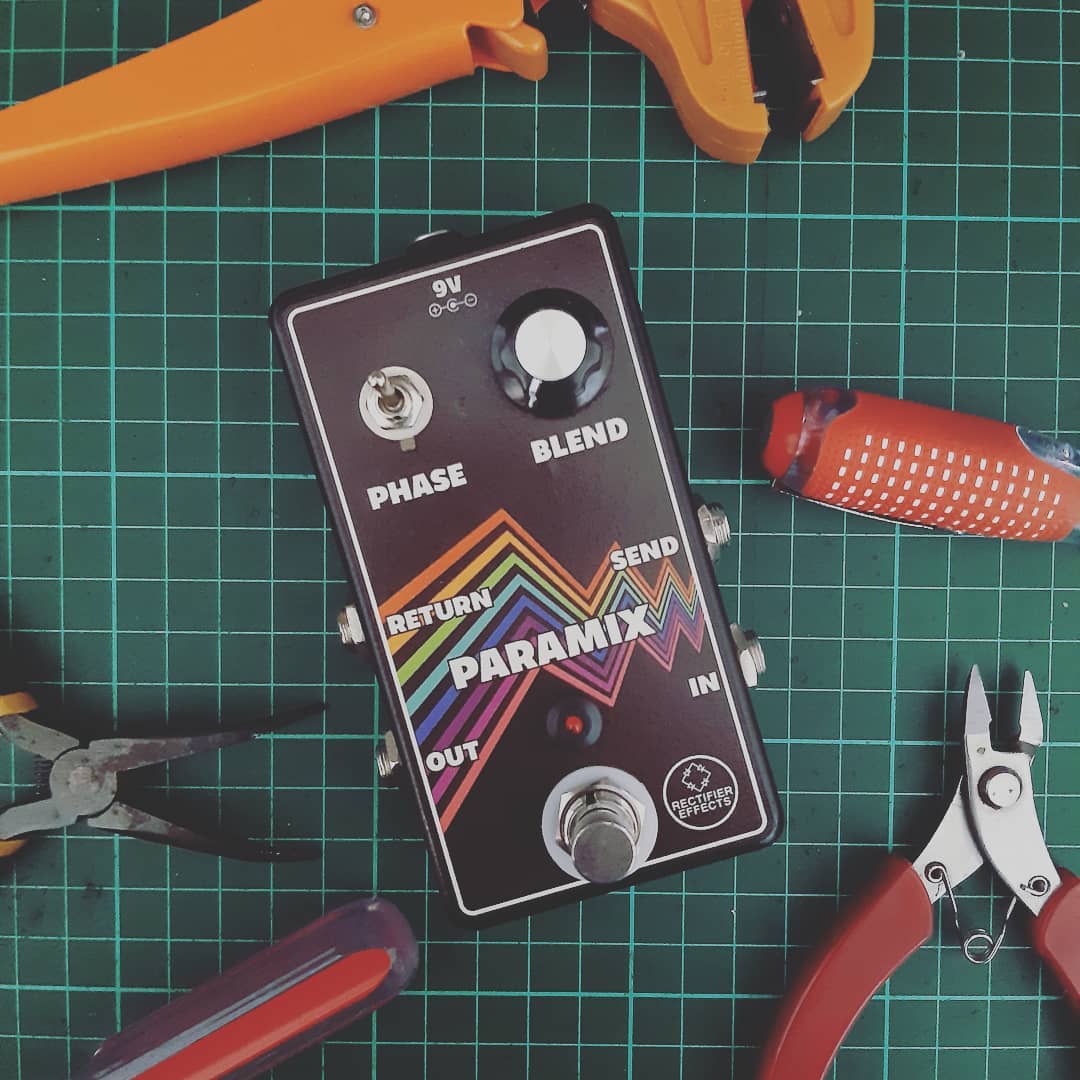
On an average, Rectifier Effects sells around 20 pedals per month since 2019, making the total amount of pedals sold to date roughly around 700-800 pedals, including the ones created before launching the Rectifier Effects brand.
View this post on Instagram
Offering a lifetime warranty on his products, each pedal is tested by leaving the power on for 24 hours. Customers can be ensured that their pedals get the attention they need as Haniff explains, “Every pedal is built one at a time, and I only get started with the next once I finish the one at hand. This enables me to focus on that pedal only.”
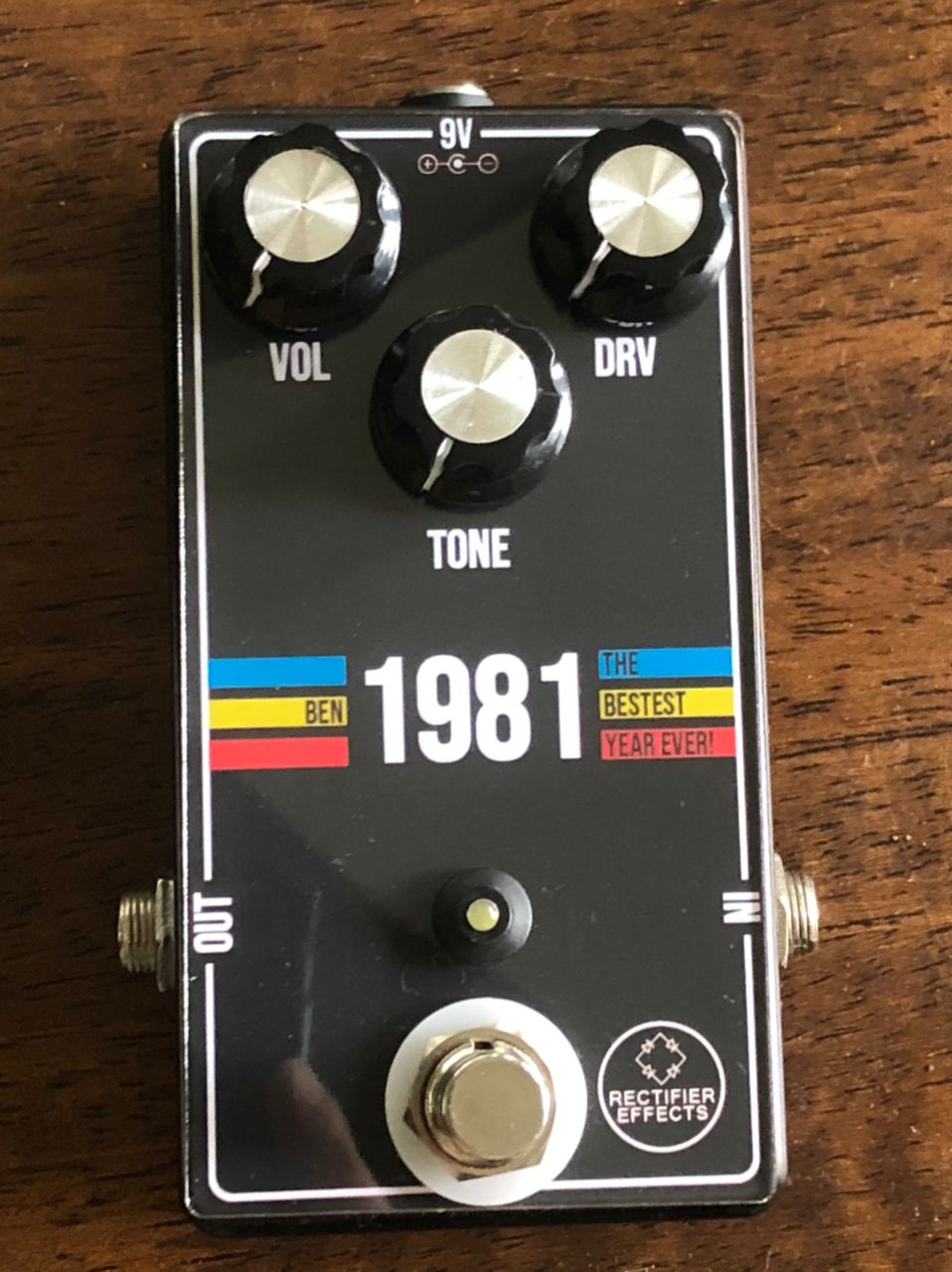
Haniff usually doesn’t take modification jobs since he is “not good at working on other people’s works.”
According to him, “When I see the circuits that I made, I can clearly see and understand everything that’s going on on the board but it doesn’t work that way when I am looking at other people’s boards. This will cost me time and I don’t have the heart to charge extra to people for a modification job just because I am an idiot. So that’s why I only reserve modification jobs for regular customers only.”
Haniff plans to look into modulation effects, which he has great interest in, after completing his studies this year.
Keep up with Rectifier Effects on Facebook and Instagram. And listen to Haniff’s band, Saskia here.
XFX Electronics
When Aiman was in high school, he was obsessed with playing guitar but couldn’t afford to buy pedals. Then one day, he discovered a YouTube channel called ‘DIY Guitar Pedals’. Learning the basics of pedal-building and electronics, Aiman’s obsession with guitars soon became all about pedal-building.
View this post on Instagram
His first attempt at building a pedal was with an MXR Distortion+ clone pedal. He had found the schematics and vero layout (DIY way) on the web. He admits it was a “copy and paste” job at first, but the pedal worked like a charm.
As he learned more, Aiman begin to produce this pedal for XFX Electronics (aka XFX Boutique) in 2019 under the ‘Clone Series’. He named it ‘Classic 741 Distortion’.
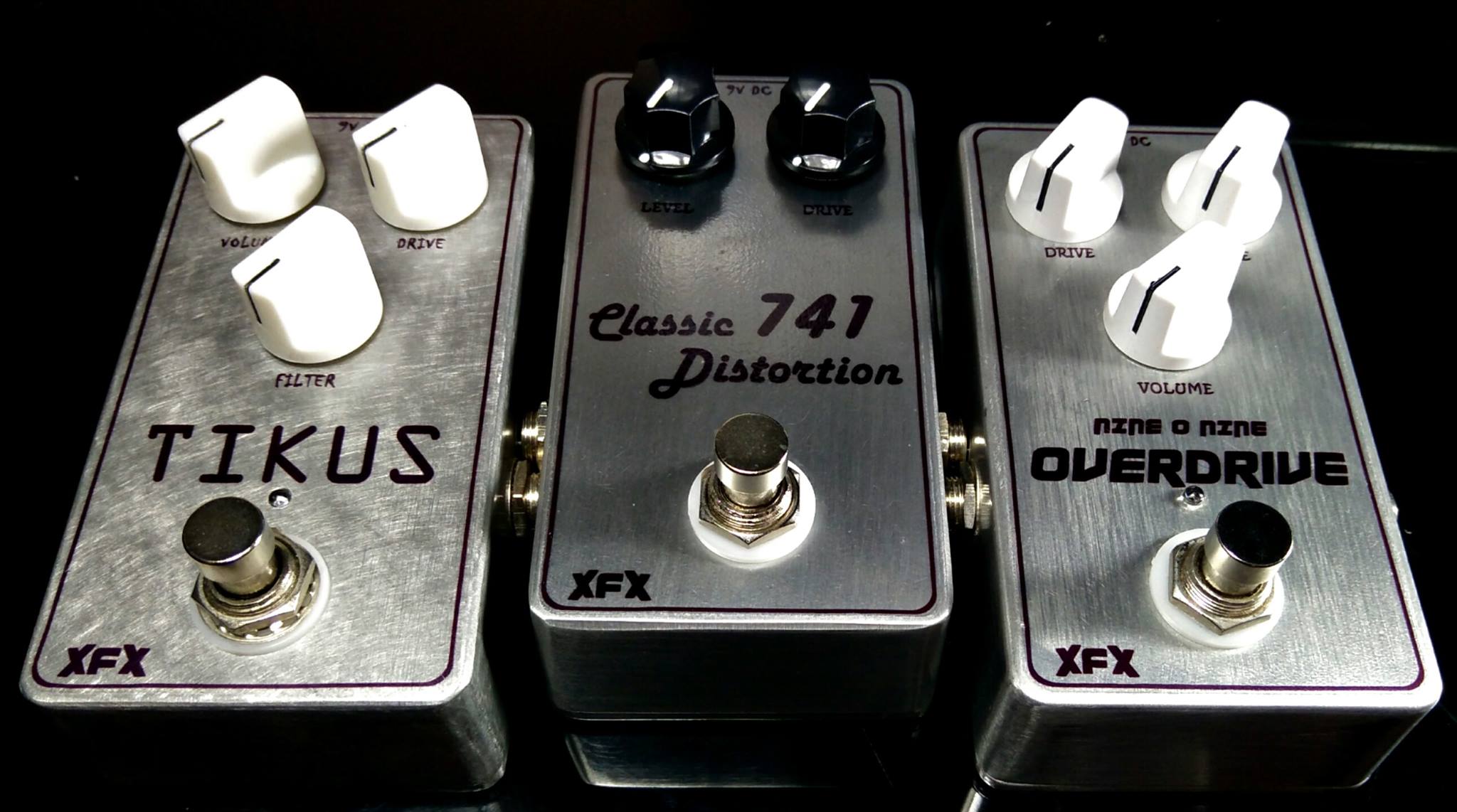
Aiman is a tinker. Without any formal training in electronics, he describes himself as a “DIY type of guy” learning through trial-and-error with the assistance of the internet as well as his father and brother who are also into electronics – they repair their own electronics devices at home. To build his first pedal, Aiman used his brother’s soldering iron. You could say that DIY-electronics runs in their family.
Although Aiman was shocked that he received orders from the US, he maintains that XFX’s mission is to help local guitarists by offering affordable, quality pedals with 90% of his components imported from various suppliers such as Alpha, Faratronic, Panasonic, and Neutrik, among others. With some pedals retailing for as low as RM100, XFX lives up Aiman’s vision.
View this post on Instagram
To date, XFX has 4 dirt pedals (Classic 741 Distortion, Ember overdrive, Destroyer distortion, and Tikus Distortion – a cheeky take on the Proco Rat using a different Op07 chip to sound different), one analog delay (Slow Pick) and a buffer pedal for sale.
Aiman doesn’t play in any bands nor does he consider himself a musician but rather a “bedroom guitarist”. He does however work in the music industry as a technical/backstage crew. He’s open to playing in a band… just for fun though.

XFX has produced and sold more than 140 pedals since 2019 with only 5-10 units returned so far due to defects. “That kind of ratio is acceptable for me,” says Aiman who personally tests the pedals before they are sold.
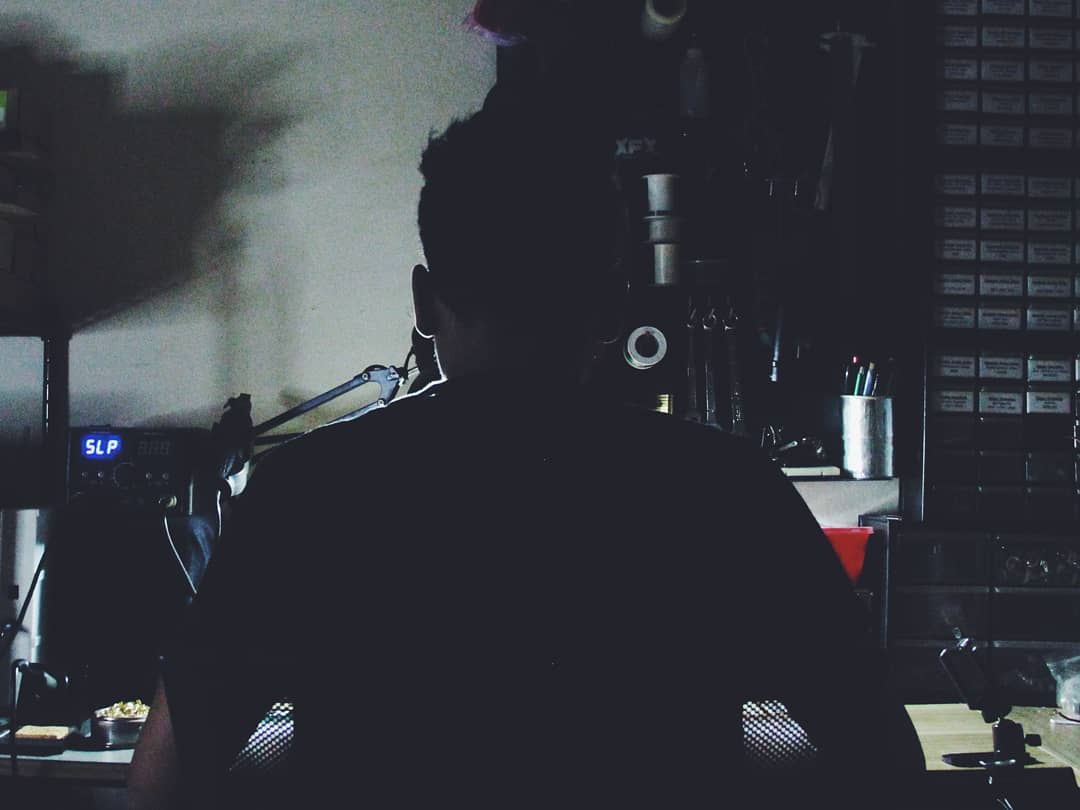
In the future, XFX will be releasing more variants. “We are planning to add more types of pedals such as chorus, reverb, phaser… We’re also planning to upgrade our graphics design to make them look more like ‘boutique’ pedals.”

Although expanding XFX’s line is exciting, deciding what pedals to be made next is not easy. “There are just a lot of good pedals out there and there are just too many replicas. So we have to figure out how to produce pedals with our own originality. We have to do a survey and we are open to customer feedback just to have rough ideas on what pedals to produce next,” he says.
Let Aiman know what pedals to produce next on XFX’s Facebook or Instagram.
Lynessmy Workshop
Many in the small pedal building scene know Jimmy as the otai builder. One of the first, if not, the first local pedal builder to start his own brand, Jimmy started playing music in church as a teen.
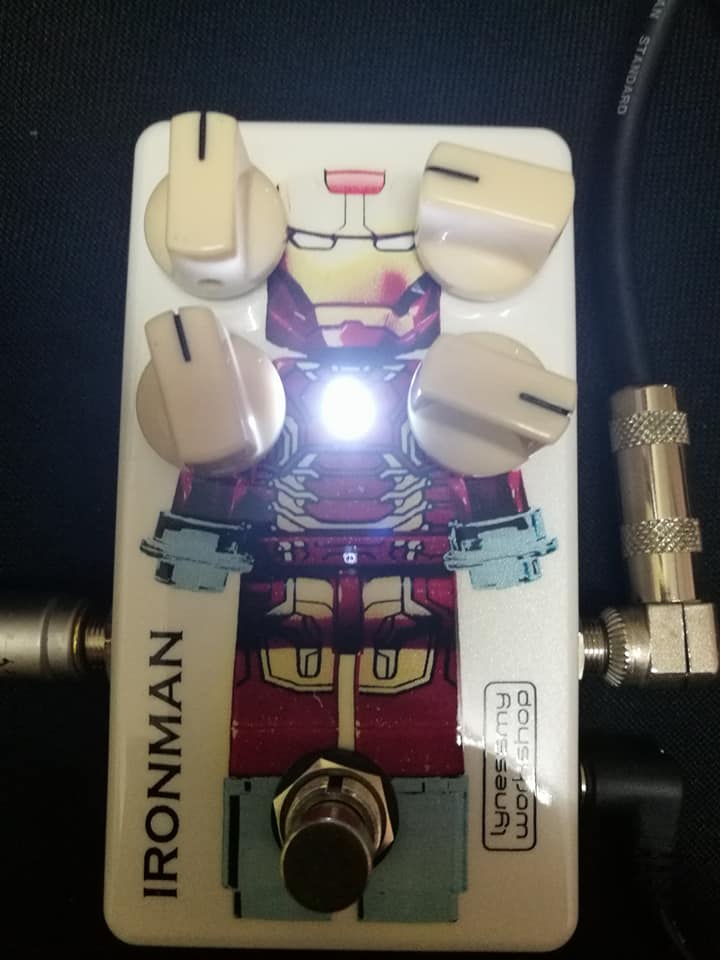
“My interest to build actually started together with my guitar learning. It was the famous (HK band) ‘Beyond era’,” he recalls of the early ’90s.
After witnessing a local band covering Beyond songs at a concert one day, the Perlis-born Penang-based local became curious as to how they got their sound.

With a rudimentary understanding of electronics from high school Kemahiran Hidup classes, Jimmy set out to create his first pedal, a Fuzz.
“Of course, it didn’t work at first. I was fooled by the simplicity of the Fuzz’s circuitry,” remarks Jimmy.
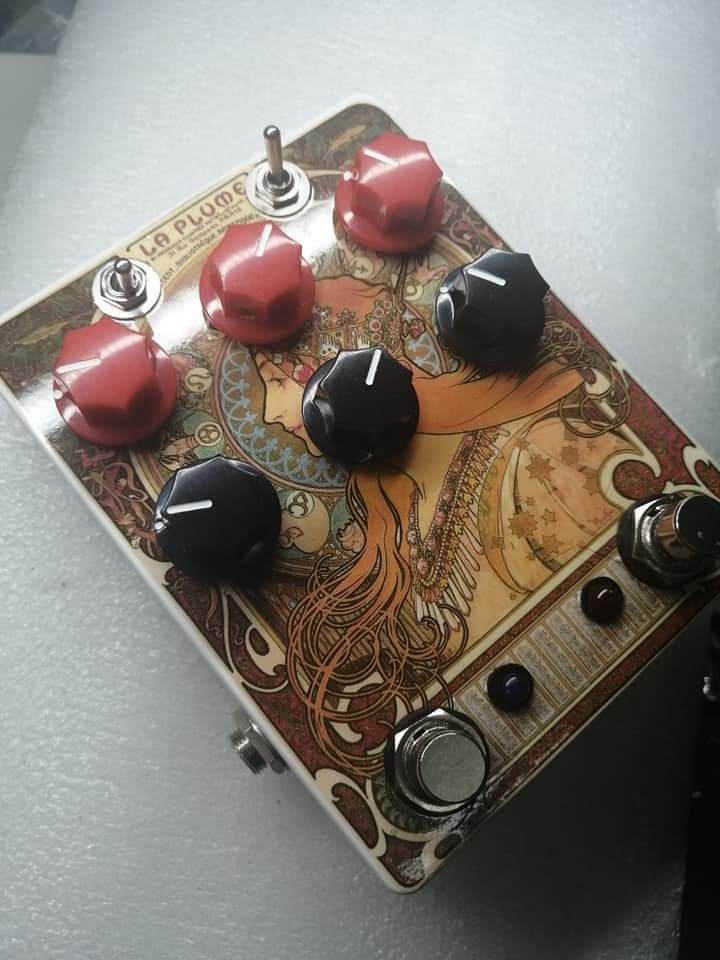
His interest in pedal building stopped for awhile until he was working and looking for side income. Now a Mechatronic Engineer, Jimmy looked back upon his former fixation with more confidence.
He now had the knowledge and the professional software (used in his dayjob) to draw his own PCBs (printed circuit boards) giving him the freedom to create his own schematics on his own boards.

Committed to building pedals comparable to boutique makers in the US, Jimmy imported the most of the critical components and soon began taking orders from Europe, Singapore and New Zealand before finding promoting his services on local music equipment-Facebook group Jamtank.
Going under the name Lynessmy Workshop (a combination of his wife and his own name), Jimmy focused on customised pedals and built per order, taking 3 to 5 weeks to complete one pedal – all hand-made and hand-painted. Though he didn’t create a line of his own, his custom builds for his customers inspired other pedal builders to grab their soldering irons.
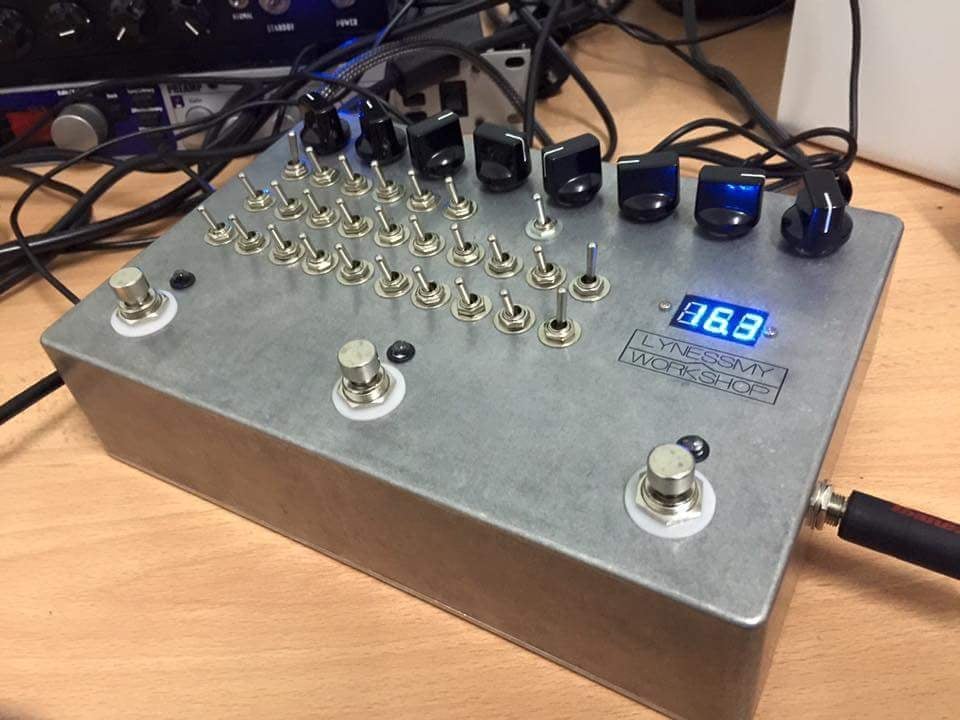
“The craziest stuff I did was I put all possible mods for a Tubescreamer into one pedal. That pedal has 3 foot switches, 20 flip switches for different clipper options, IC selector switch and a few other features. The pedal was called Dino. It was played by Alex Hutching (Boss/Roland artist). He like it and signed on the pedal,” Jimmy tells us.

Though he never had any students, many other builders and enthusiasts connected with Jimmy via social media for troubleshooting and repair advice. “I would never turned anyone down. Knowledge is for sharing,” says the humble engineer.
Unfortunately, one of the reasons why Jimmy stopped building pedals was because of his eyesight. “When I was building, I kept challenging myself with smaller sized components. I use a lot of surface mount components and that consumed me for a long period and my eyesight started to go downward.”
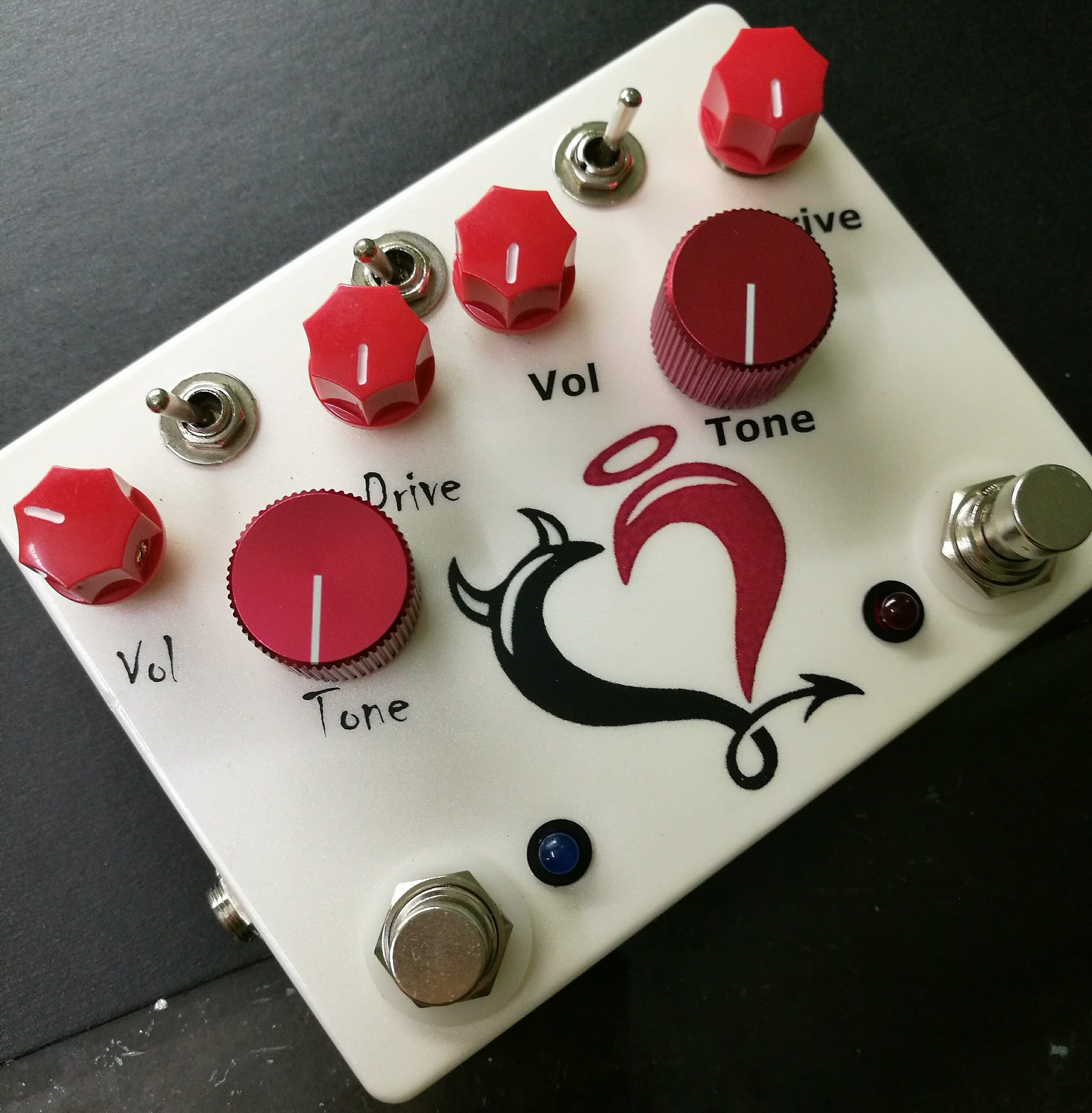
Today, Jimmy occasionally supports local artistes with their equipment repairs in addition to being a product manager with AMD.
Even though he has stopped making pedals, you can still find rare builds from Lynessmy Workshop floating around the second-hand market, like the WTFuzz pedal below which this Writer bought on Jamtank recently.
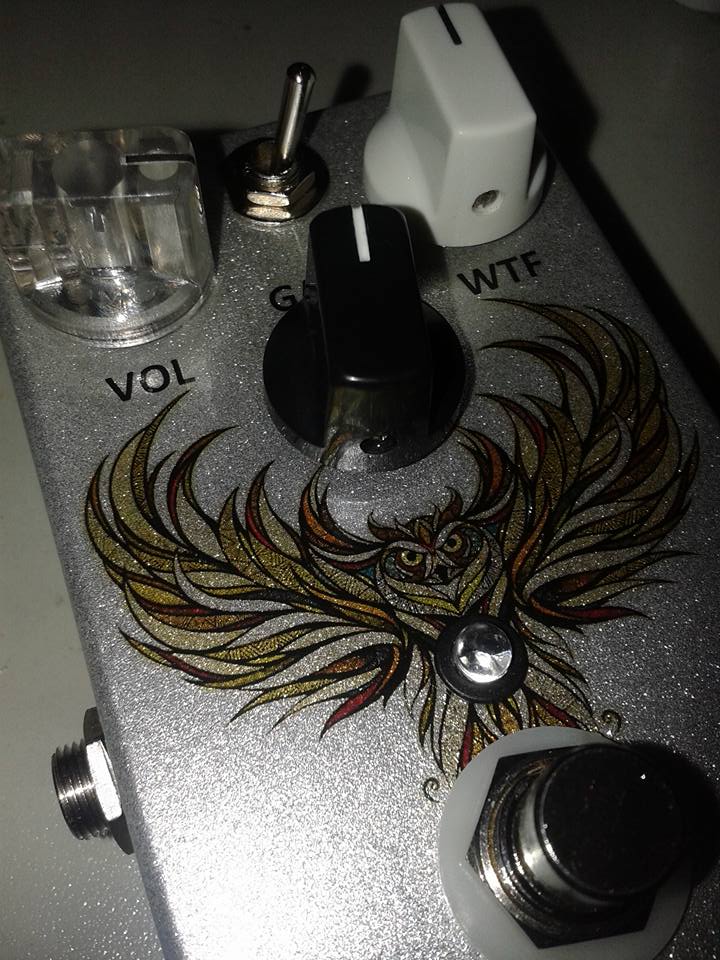
Though he doesn’t take orders anymore, you can still hit up Jimmy if you have any questions on pedal building and electronics in music. Connect with Jimmy via his Facebook page.


 Get Audio+
Get Audio+ Hot FM
Hot FM Kool 101
Kool 101 Eight FM
Eight FM Fly FM
Fly FM Molek FM
Molek FM
